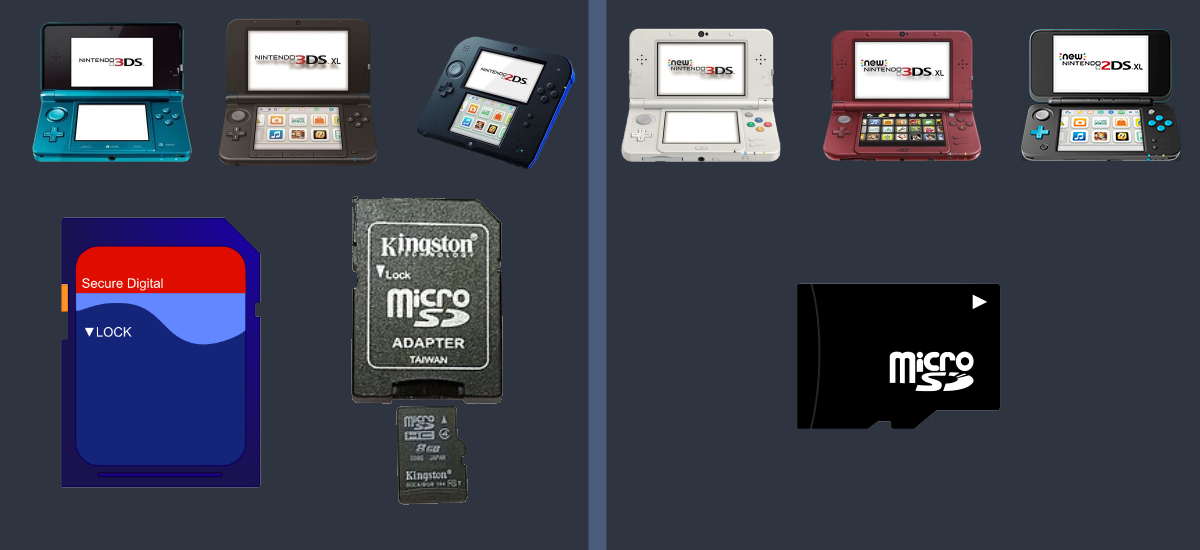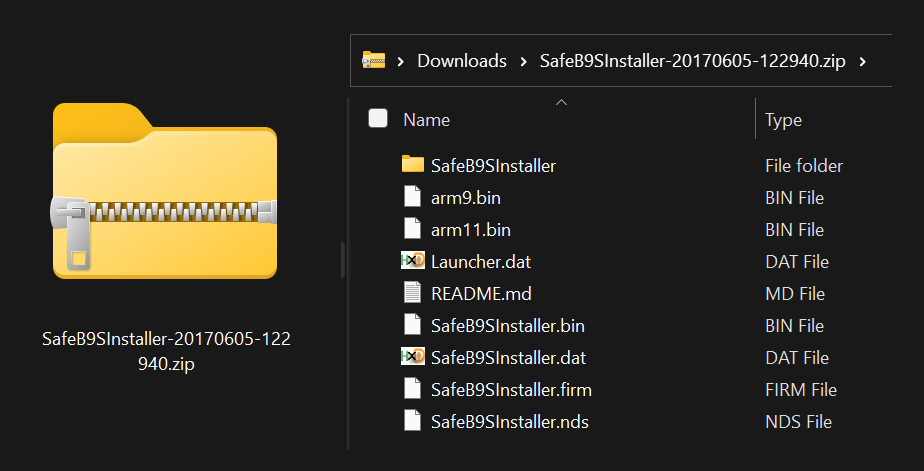Key Information
If this is your first time modding a 3DS (or you’re unfamiliar with technology), keep reading! Otherwise, if you have prior experience and know what you’re doing, continue to Get Started.
This page covers some of the base computer terminology and 3DS-specific information that you should know before following this guide.
Each section is collapsed by default. Click or tap on the name of the section to open it.
Things you should know about the 3DS
3DS/2DS compatibility

This guide works with every retail device in the Nintendo 3DS family of consoles (including the 3DS, 3DS XL/LL, 2DS, New 3DS, New 3DS XL/LL, and New 2DS XL/LL, regardless of region or firmware.
Computer compatibility

You can follow this guide as long as you are able to download files from the Internet and copy them to your SD card. Depending on your computer/phone/electronic device, you may need to purchase a USB to SD card adapter to allow your computer to read your SD card.
SD card location, type, and capacity

The location of the SD card slot and the type of SD card that is accepted depends on the model of your 3DS. More information can be found on Nintendo’s official support page.
The 3DS can read SD cards of any capacity (even those larger than 32GB), but the card must be formatted as FAT32 (not exFAT or NTFS). You can use one of the following tools to format your SD card, depending on your operating system: Windows, macOS, Linux.
To follow this guide, you’ll need an SD card with a capacity of at least 2GB.
If you want, you can check your SD card for errors before following this guide using H2testw (Windows), F3 (Linux), or F3XSwift (Mac)
Potential risks
By modding your device, you subject it to the remote (but non-zero) possibility of the device being banned from online play or bricked (rendered non-functional). Incorrect file placement will NOT brick your device, but purposely skipping instructions might. Similarly, the last ban wave occurred over five years ago, but there is no guarantee that another one will not occur in the future.
In short: Modding your device is safe, but it’s your responsibility if something goes wrong.
Things you need to do on your computer
Downloading and copying files

In this guide, you will copy files that are downloaded on your computer/phone to your 3DS SD card. Many of these files come from GitHub, so refer to the above screenshot if you’re unfamiliar with how to download files from there.
Opening/extracting files

Some of the files that you will be asked to download come in the .zip file format, which is used to package multiple files into one file.
When you are told to “copy (file) from (file).zip”, that means that you need to open (or “extract”) the ZIP file. Inside the ZIP file will be the file you’re looking for, after which you can copy it to the specified location on your SD card.
On most operating systems, you can extract files by double-clicking the file. If this doesn’t work, you can install a reputable third-party extraction tool like 7-zip instead.
(Windows only) File extensions

If your computer is running Windows, file extensions may be hidden by default, which may make it harder to find the files you’re looking for. To enable file extensions, follow these instructions.
Getting help
If you experience an issue while following this guide, there are many ways that you can get help!
- If you have any questions that haven’t been answered on this page, their answers might be in the Pre-Installation FAQ.
- If you experience an issue while following this guide, you can check the Troubleshooting page for a solution.
- If the resources we’ve provided here aren’t helping, you can get one-on-one support over at Nintendo Homebrew on Discord.
Continue to Get Started